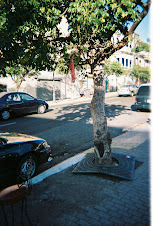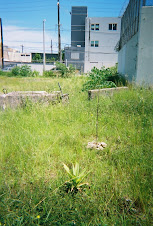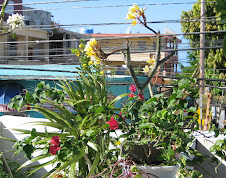Human induced disturbances to the landscape are now of such great scope and scale that they overshadow the patterns of natural disturbances. Natural disturbance is,
of course, part of a natural cycle, the result of climatic extremes, fire, the death of a tree, a flood, or countless other phenomena. Indeed, these cyclical events are a vital
stimulus to change and integral to sustaining regional diversity within great forest
expanses. What most distinguishes natural disturbance from human induced disturbance is the extent to which it falls within the historic range of its occurrence.
Events at the limit of the natural range shape the landscape profoundly, such as the
blowdown of 1938 in New England or the fire of 1963 in the Pine Barrens of the New
Jersey. Events that extend well beyond their naturally occurring variability, however, exceed the recoverability of many plant and animal communities.
Complex, long established ecosystems are collapsing after repeated disturbance.
For example, repeated clearcutting inflicts far more serious and long term impact
of natural forest regeneration than was previously recognized. At the same time,
a few supercompetitive and generalist species are thriving at the expense of almost all others in the landscapes created by human settlement. Now unchecked suburbanization and resource extraction are consuming ever more of the remaining wild and rural lands. The living systems around us are losing their
richness and resilience, and we sense the implications for own lives.
Few of us can fully imagine or appreciate the grandeur and intricacy of the original forest encountered by the first settlers. But mos of us remember a forest we knew once that we have watched decline or disappeared all together. The lands we saved for their rich landscapes are changing before our eyes as the impacts of the last few centuries become more visible.
While park users and land managers are becoming more aware of the urgency of the problem, they are hampered by lack of information and experience in dealing with the management and restoration of disturbed landscapes. Natural resource
managers typically study intact ecosystems and may have little experience with disturbed landscapes, and horticulturalists are usually inadequately trained
in large scale natural systems. Ecologists and biologists in the past often devoted
relatively little energy to solving on the ground management problems and sought
instead to find and document the most pristine sites. Today the scientific community is shifting its focus toward restoration, but there is are no consistent policies or proven methodologies that reliably result in restoration. Perhaps the most difficult aspect of all is that restoration is a long term effort requiring a high degree of expertise and commitment rather than a quick fix.
Despite the challenges facing them, many landscape managers are attempting forest restoration and getting some good results for their efforts. These concerned
managers are developing the art and science of caring for fragmented forests by monitoring, studying, maintaining, replanting, and experimenting in woodlands and forests. They are aware that restoration is an going job and that natural systems are often so compromised we cannot expect them to recover if they are simply left on their own. Progress is not necessarily smooth and transformation
are not instantaneous, but these landscape managers are monitoring the landscape, limiting further impacts, and initiating improvement in the management of the natural systems under their care.
I will leave it here. There is one more part of the introduction left. In Puercorico USA, any jerk
with/without academic titles, politicians, community leaders, and jerks/jerkettes, opportunists of all kinds, banks, public/private agencies believe that taking care/respecting the environment is just: collecting garbage, recycling, or digging holes like mentally retarded without supervision and planting trees without much else, any
thought about maintenance. That is my stance. and that is that....
miércoles, 14 de abril de 2010
Suscribirse a:
Enviar comentarios (Atom)


















-25.jpg)
-24.jpg)




































-22.jpg)
-25.jpg)
-24.jpg)






-16.jpg)
-13.jpg)
-08.jpg)

















































No hay comentarios:
Publicar un comentario